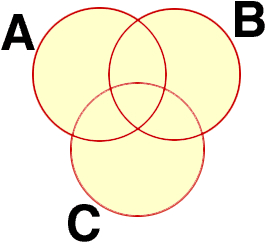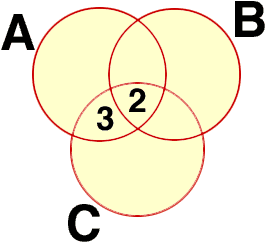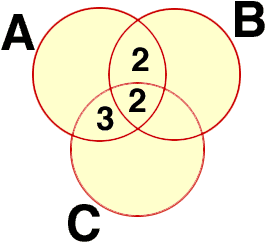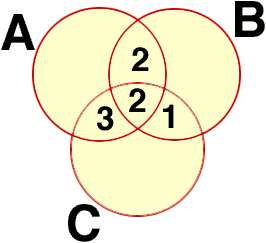HI MY NAME IS TONY
MY QUESTION IS : I HAVE THREE CIRCLE THAT IS CIRCLE TOGETHER: IN CIRCLE A, THE NUMBERS ARE: 11 I KNOW IS IN CIRCLE A, BUT I HAVE THE: 5 THAT IN A AND C, I HAVE THE 2 IN THE CIRCLE C AND B AND AND A, THE CIRCLE C I KNOW THAT 10 IS IN THE CIRCLE THE 4 IN CIRCLE A: AND B: IN CIRCLE B, I KNOW NUMBER 13 IS IN CIRCLE B; BUT I HAVE THE 3 IN CIRCLE B AND C AND I HAVE THE 2 IN CIRCLE B AND C AND A ,THE 4 IN CIRCLE B AND A.
HOW DO I FIND THE SUM IN CIRCLE C AND IN B IN BOTH CIRCLE A AND B AND B AND C NOT IN CIRCLE B, AND NOT CIRCLE C.
I am a student
Hi Tony,
I hope I have this correct. You have what we call a Venn Diagram.

Circle A:

Circle C:

Circle B:

You should now be able to fill in the remainder. For example there are 11 in circle A and you have already included 7 (3 + 2 + 2) and thus there are 4 in the remaining part of A.
Cheers,Penny
To return to the previous page use your browser's back button.